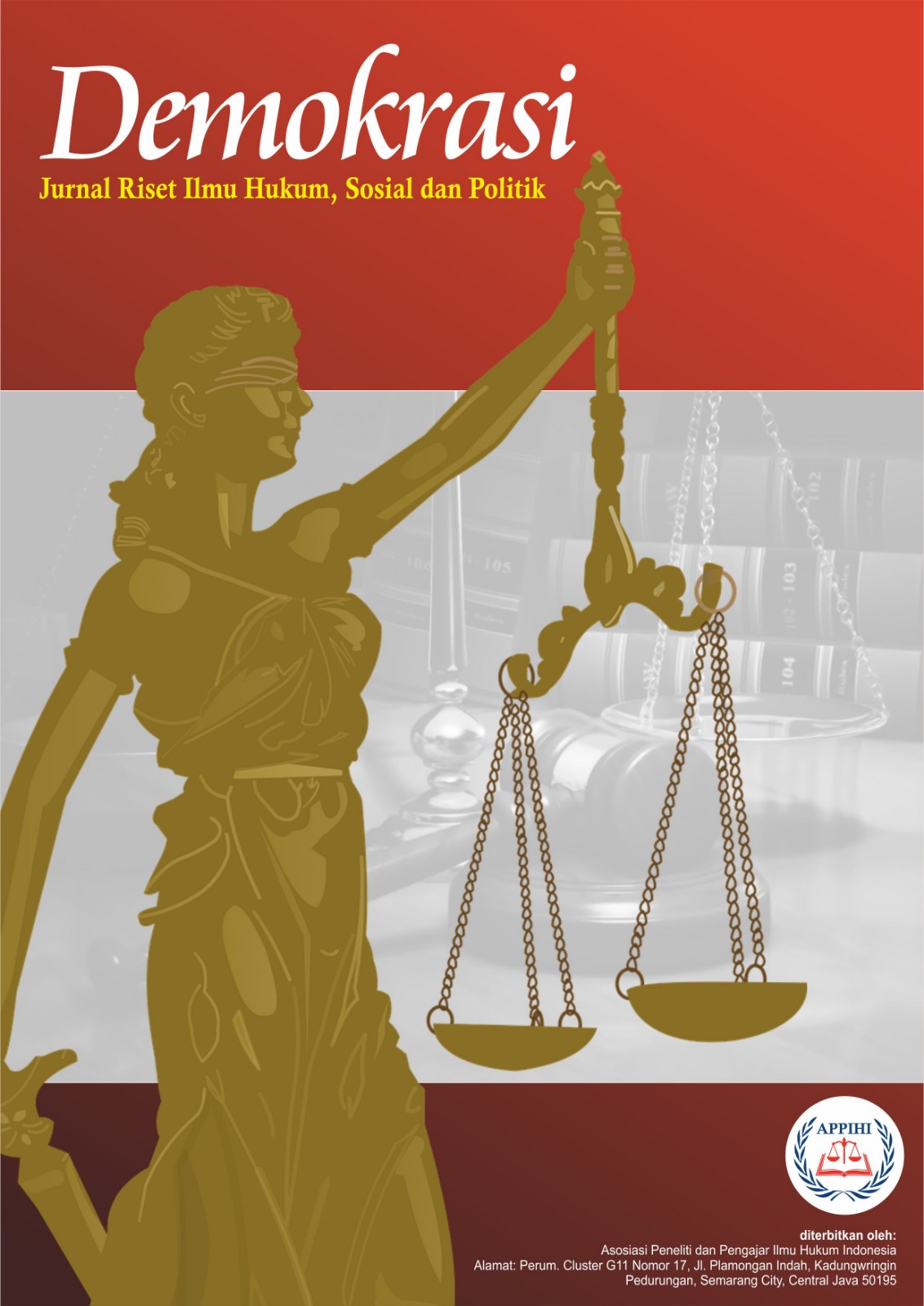Analisis Kewajiban Penyelenggara Sistem Elektronik dalam Memberikan Perlindungan Bagi Anak: Konteks UU Nomor 1 Tahun 2024
DOI:
https://doi.org/10.62383/demokrasi.v2i2.845Keywords:
Children, Electronic Systems, Law Number 1 of 2024, Modernization, OrganizersAbstract
The rapid advancement of information technology in the modern era has significantly transformed various aspects of life, including the dissemination of information and digital services. In Indonesia, this transformation is marked by the widespread use of electronic systems in daily activities, by the government, private sector, and individuals alike. However, this progress also brings new challenges, particularly concerning child protection in digital spaces. Children, as a vulnerable group, are at risk of exposure to inappropriate digital content, misuse of personal data, and online exploitation.This article aims to analyze the obligations of electronic system providers in ensuring child protection, as regulated in Law Number 1 of 2024 concerning the Second Amendment to Law Number 11 of 2008 on Electronic Information and Transactions (ITE Law). The study uses a normative juridical approach, analyzing applicable regulations, literature reviews, and relevant case examples.The findings indicate that Law Number 1 of 2024 strengthens the legal framework regarding the responsibilities of electronic system providers to ensure children's safety in the digital world. These responsibilities include content filtering, protection of children's personal data, and the provision of reporting and violation handling systems. This article emphasizes the importance of the active role of electronic system providers in creating a safe and child-friendly digital environment, as well as the need for government oversight and public participation in its implementation. This study is expected to serve as a reference for policy development on child protection in the digital era.
Downloads
References
Angkupi, P. (2014). Kejahatan melalui media sosial elektronik di Indonesia berdasarkan peraturan perundang-undangan saat ini. MIKROTIK: Jurnal Manajemen Informatika, 2(1), 1–10.
APJII. (2024). APJII: Jumlah pengguna internet Indonesia tembus 221 juta orang. https://apjii.or.id/berita/d/apjii-jumlah-pengguna-internet-indonesia-tembus-221-juta-orang
Ferdiansyah, R., & Wahyudi, E. (2023). Kajian yuridis cyberbullying terhadap anak secara online berdasarkan Undang-Undang Perlindungan Anak. Jurnal Hukum Media Justitia Nusantara, 13(2), 20–27. https://ojs.uninus.ac.id/index.php/MJN/article/view/2640
Khairunnisa, Munir, & Gufran. (2022). Perlindungan hukum terhadap siswa dan UU ITE: Systematic literature review. Fundamental: Jurnal Ilmiah Hukum, 11(2), 119–136. https://doi.org/10.34304/jf.v11i2.67
Marditia, P. P. R., & Samosir, A. M. R. (2022). Tanggung jawab hukum marketplace terhadap pemasaran alat bantu seksual di bawah umur. Jurnal Meta-Yuridis, 5(2), 138–148. https://doi.org/10.26877/m-y.v5i2.10238
Muhaimin. (2020). Metode penelitian hukum. Mataram University Press.
Rumokoy, D. A., & Maramis, F. (2014). Pengantar ilmu hukum. Rajawali Press.
Soekanto, S., & Mamudji, S. (1995). Penelitian hukum normatif: Suatu tinjauan singkat. RajaGrafindo Persada.
Syarif, M. N. (2012). Hakikat pertanggungjawaban pemerintah daerah dalam penyelenggaraan pemerintahan. Masalah-Masalah Hukum, 41(1), 50–58. https://doi.org/10.14710/mmh.41.1.2012.59-64
Downloads
Published
How to Cite
Issue
Section
License
Copyright (c) 2025 Demokrasi: Jurnal Riset Ilmu Hukum, Sosial dan Politik

This work is licensed under a Creative Commons Attribution-ShareAlike 4.0 International License.





